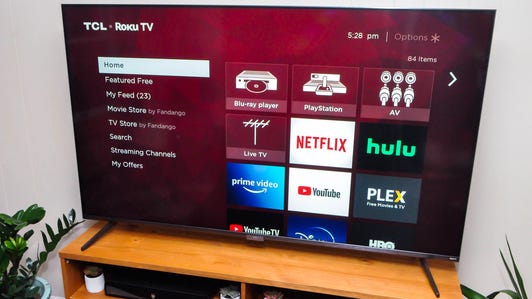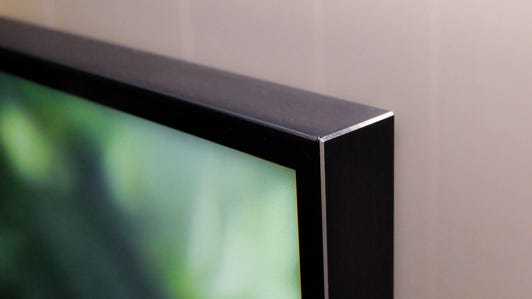
The TCL 6-Series Roku TV has big shoes to fill. For two years running it's been my favorite TV for everyday buyers, with excellent image quality, class-leading smarts and an affordable price. The 2020 version adds a new backlight system powered by mini-LED, improved gaming features and a 75-inch size, yet keeps the cost affordable. The result is the best picture quality for the money I've tested this year.
Like
- Excellent overall image quality
- Superior brightness for the price
- Great game mode performance
- Roku smart TV is simple, capable
Don't Like
- Some issues with low-light dimming
Those mini-LEDs maximize brightness, leading to better images in bright rooms and with HDR. Local dimming, meanwhile, manages to keep black levels dark and overall contrast superb -- although it's not perfect. And gamers will appreciate the new THX Certified game mode, which serves up fast response time with minimal lag and excellent image quality.
Compared to the 2019 6-Series the 2020 version is better in pretty much every way. The new 6-Series isn't as good as the 2019 TCL 8-Series, however, which has an even brighter image and better local dimming. Normally there's a big price gap between the two but when the 8-Series is on sale -- as it often seems to be -- video quality snobs who don't want to spring for OLED should probably choose the 8 instead.
You'll have to spend a lot more to get that improved image quality, however, and for most people it's just not worth it. Compared to other mainstream-priced TV's I've tested since this review first published, including the Sony XBR-X900H and the Vizio M-Series, the TCL 6-Series remains my overall favorite and earns CNET's Editors' Choice award.
Gray metal body, adjustable feet
TCL's midrange TVs have a much more polished look than their budget sets and the new 6-Series is no exception. The slim frame around the image and thicker bottom edge are dark gray textured metal, with subtle TCL and Roku logos. Not-so-subtle is the big accent light below the central logo -- it turns off when you turn on the TV, thankfully, but I wish there was a way to disable it entirely. (Update: You can! Go to Settings > System > Power and turn off the Standby LED. Thanks to commenter chazzsubscribe.)
New for 2019 is a dual-position stand leg arrangement on the 65- and 75-inch sizes that lets you place the legs either out toward the edge of the panel, as seen in the images here, or more toward the center. Both also include a cable cozy in the legs that let you kinda hide HDMI, power and other connectors.

Hello, Roku (now with HBO Max)
I'm a fan of Roku TV, for reasons I've documented extensively in previous reviews. Here's the short list why:
- Frequent updates and feature improvements
- Simple menus with full customization, including input naming
- Inputs on the same home page as TV apps
- More apps (and 4K HDR apps) than any other smart TV system
- Cross-platform search covers many services and allows price comparisons
Like other Roku devices, the TCL 6-Series now includes an HBO Max app, bringing its app selection up to the level of (and in most cases far exceeding) the competition. It also supports Apple's AirPlay system, which is also available on competing TVs from Vizio, LG, Sony and Samsung.
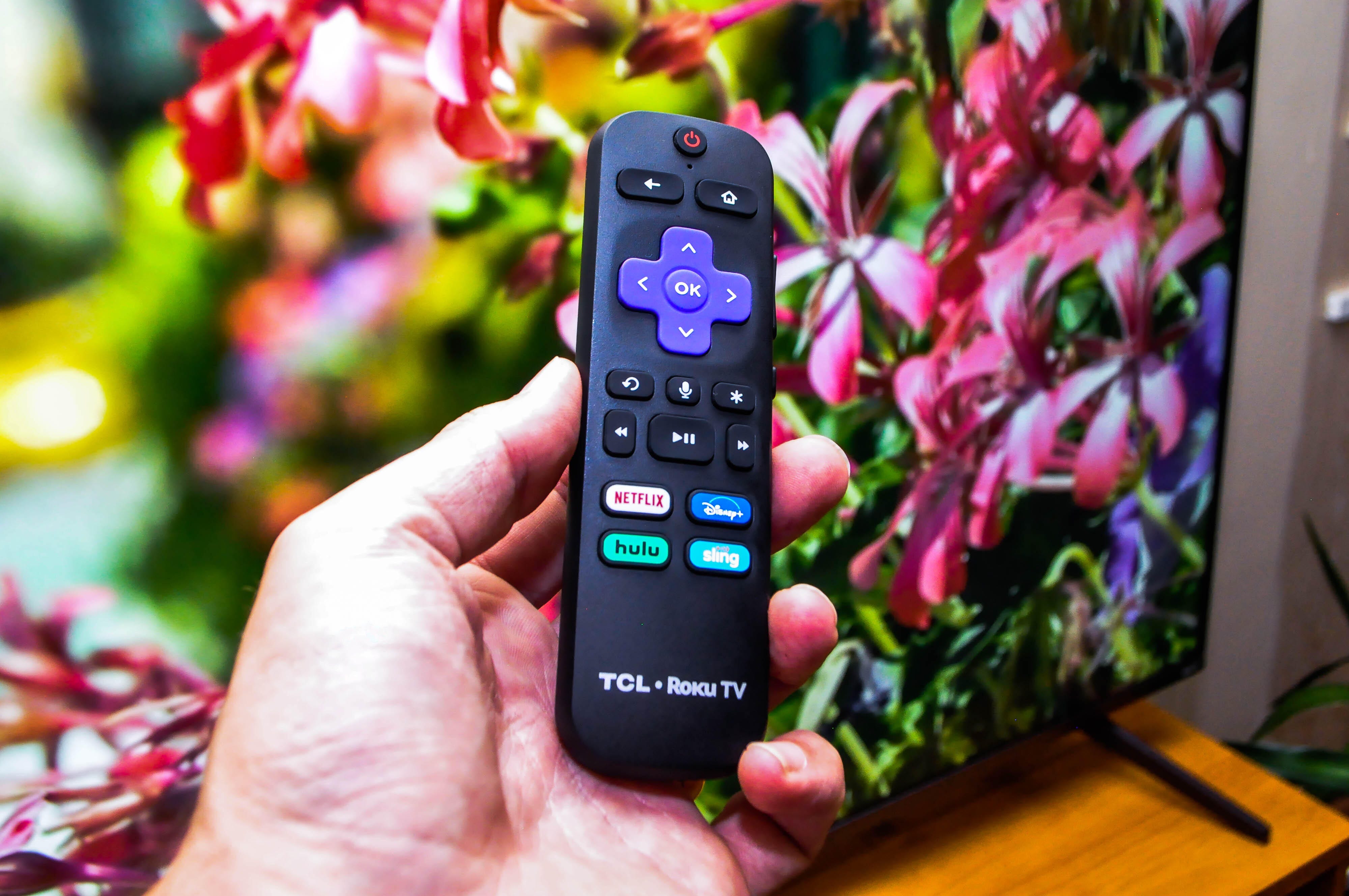
The 6-Series includes the simple Roku remote with built-in voice control. Roku's voice function isn't nearly as robust as Amazon Alexa, found on Fire Edition TVs, for example, but it worked fine for searches, app launching, switching inputs and tuning to an antenna channel. If the TV is off, a voice command such as "Launch Netflix" will turn it on and launch the app.
Mini-LED leads a big list of features
Mini-LEDs are, as you might have guessed, smaller than standard LEDs, allowing them to be grouped into more local dimming zones. Full-array local dimming is the best way to improve picture quality on LCD TVs. It allows the backlight -- the part behind the LCD screen that provides illumination -- to dim and illuminate different areas simultaneously. Smaller areas, or more dimming zones, mean more precise illumination, which ultimately increases contrast, the most important ingredient in a good picture.
Key TV features
| Display technology | LED LCD (Mini-LED) |
|---|---|
| LED backlight | Full array with local dimming |
| Number of zones | 55-inch: 128, 65-inch: 160, 75-inch: 240 |
| Resolution | 4K |
| HDR compatible | HDR10 and Dolby Vision |
| Smart TV | Roku TV |
| Remote | Voice |
TCL is still the only TV maker to use mini-LED technology, first in the 8-Series and now in the 6-Series, but specs on the 6-Series aren't nearly as impressive. The cheaper 6 has around 1,000 LEDs and 240 zones on the 75-inch size, while the more expensive 8 has 10,000 mini-LEDs and 1,000 zones. That's likely the biggest reason the 6-Series didn't perform as well as the 8-Series in my tests.
Read more: Mini-LED is here: How smaller lights could lead to big TV improvements
The 2020 Vizio P-Series is probably the new 6-Series' closest competitor and it actually has more local dimming zones than the TCL -- 200 on the 65-inch size. The Hisense H9G matches the TCL with 160 zones on the 65-inch size, while other TV makers like Sony and Samsung don't specify number of zones.
Another improvement over the 2019 6-Series is a true 120Hz refresh rate on all sizes in the series, which leads to better motion performance. Like most TVs in its class today the 6-Series uses quantum dots that help improve color compared to non-QD-equipped TVs. And of course it supports both Dolby Vision and HDR10 high dynamic range formats. These days basically the only manufacturer that doesn't is Samsung.
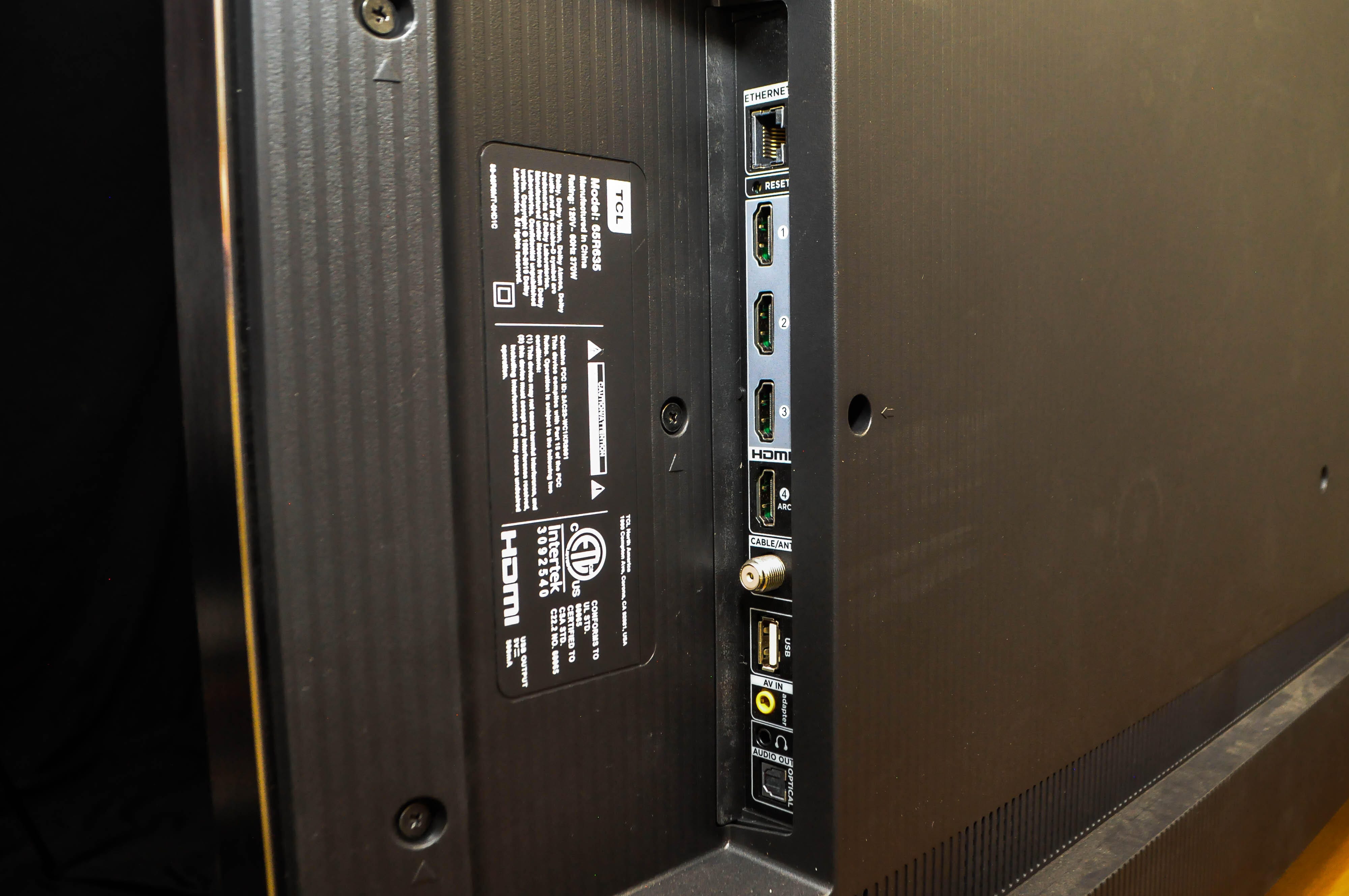
Inputs are ample:
- 4x HDMI inputs
- 1x analog (composite) video input
- 1x USB port (2.0)
- Ethernet (wired internet)
- 1x headphone jack
- 1x optical digital audio output
- 1x RF (antenna) input
The 2020 6-Series supports Auto Game Mode that engages the new THX Certified game mode automatically when connected to a compatible device. New for this year it also has variable refresh rate and the ability to accept frame rates up to 120Hz. The latter are both important capabilities of the upcoming PS5 and Xbox consoles, but hardcore gamers should note that the 6-Series lacks the ability to do 4K resolution 120Hz with HDR, instead maxing out at 1440p resolution. The Vizio P-Series and Sony X900H, meanwhile, can handle 4K/120 with HDR. I'm not sure how big a difference it will make but I plan to test the new TVs with those consoles when they come out.
Picture quality comparisons
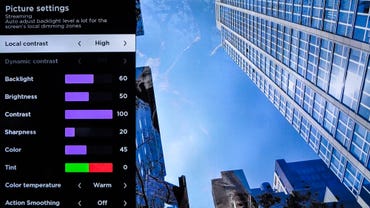
Click the image above to see CNET's picture settings.
David Katzmaier/CNETWhile the TCL 6-Series put out an excellent image, I can't say yet how it competes against the 2020 Vizio and Hisense sets mentioned above, since I haven't reviewed them yet. Against the TVs I have reviewed, however, its overall picture is better than any other set that earned an 8 in this category -- yet not quite worthy of the 9 I gave the brighter and more expensive 8-Series and Vizio PX from last year, let alone OLED models like the CX that earned a 10. The new 6-Series nails the basics and looks great for gaming, but some issues with dimming in select scenes held it back a little.
Dim lighting: With standard Blu-ray and other SDR content calibrated for a dark room, the TVs looked very similar, and any differences would be tough to distinguish outside of a side-by-side comparison. Overall the Sony showed slightly lighter black levels than the TCLs, for a slightly less impactful and contrasty image, and between the three TCLs the 8-Series looked best by a nose.
Watching 1917 on Blu-ray, for example, after the soldier awakens in chapter 13 (1:06:38), the 635's letterbox bars and shadows looked truer and more inky than the Sony's, while I could discern more of the folds of his uniform and walls in the background than on the 625. Meanwhile the 635 and the 8-Series were closest of all, with the only real difference being slightly better shadow detail on the 8-Series.
During the extremely dark assault on Hogwarts from Harry Potter and the Deathly Hallows, the 635 again looked best aside from the 8-Series. Compared to the 625 from 2019 its black levels were very slightly worse but shadow detail was significantly better, and all three TCLs maintained black levels better than the Sony.
In content prone to blooming, for example when I brought up the playback controls during a black screen, the TCLs all did a better job controlling the stray illumination than the Sony, which lit up larger portions of the image. The 635 did show blooming more with brighter content, however, including HDR (see below).
Bright lighting: The TCL 6-Series is the brightest TV I've ever measured at this price. Brighter TVs like the 8-Series and the Vizio PX cost a lot more -- as do numerous dimmer examples like the Sony X900H.
Light output in nits
| TV | Brightest (SDR) | Accurate color (SDR) | Brightest (HDR) | Accurate color (HDR) |
|---|---|---|---|---|
| Vizio PX65-G1 | 1,990 | 1,120 | 2,908 | 2,106 |
| TCL 65Q825 | 1,653 | 904 | 1,818 | 982 |
| TCL 65R635 | 1,114 | 792 | 1,292 | 1,102 |
| Sony XBR-65X900H | 841 | 673 | 989 | 795 |
| TCL 65R625 | 653 | 578 | 881 | 813 |
| Vizio M658-G1 | 633 | 400 | 608 | 531 |
| LG OLED65CX | 377 | 290 | 690 | 634 |
The TCL's brightest settings, "TV Brightness: brighter" and "Picture mode: Vivid," (or "Bright HDR" for HDR content) are terribly inaccurate. An accurate bright-room picture is laudably easy to achieve, however. Just switch the mode to "Movie" or "Dark HDR" mode, which reduces light output but delivers a much better image.
Under bright lighting the 2020 6-Series' TCL's screen performed a bit better than last year's model, as well as the Sony, at mitigating reflections and preserving black levels and contrast. Overall its bright-room image is just as impressive for the price as its home theater picture.
Color accuracy: According to my measurements the TCL 635's color was excellent before calibration in Movie mode and even better afterward. Watching 1917, for the most part I'd call its color excellent as well, as indicated by the numbers. It did appear slightly less saturated than the other three at times, for example, in the faces of the soldiers or the reddish glow of the firelight. In general the difference was minimal, however, and in other scenes it was much less visible.
Video processing: The 6-Series is a 120Hz native TV with plenty of options for handling motion. The most obvious is Action Smoothing which has four settings. In Off the TV delivers correct 1080p/24 film cadence but in the other settings, Low and higher, it causes the TV to have the buttery smoothness of the soap opera effect.
Those other settings, "Action Clarity" and "LED Motion Clarity," affect motion resolution and interact with one another. The good news is that achieving maximum motion resolution doesn't require SOE. When I toggled LED Motion Clarity on, engaging black frame insertion, and cranked Action Clarity to High, I measured a healthy 1,080 lines of resolution -- very good, albeit not as good as the Sony or some other 120Hz TVs I've tested. Turning LED Motion Clarity off reduces resolution out at 600 lines. I preferred to leave AC on High and turn LED Motion Clarity off because the latter dims the image slightly and introduced some flicker. Viewers very averse to blur might want to leave it on, however.
Compared to last year the 2020 6-Series added a couple milliseconds of gaming input lag, clocking in at around 18/19ms for both 1080p and 4K HDR in game mode. Twitch gamers might notice, but nobody else will. That said, the chances of noticing lag go way up for anybody who doesn't use game mode in 4K HDR: I measured 134ms (!) in 4K with game mode turned off.
"Game mode" is actually anoth





























